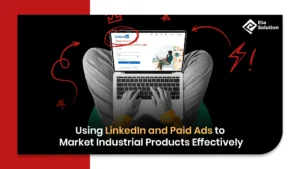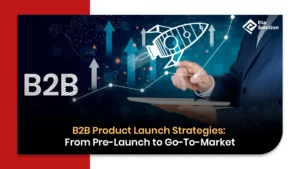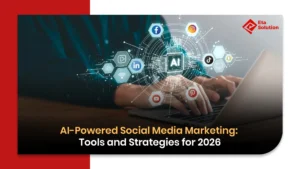
How to Rank Your Business in Google Maps
There’s a quiet war happening on Google Maps, and most local businesses don’t even realize they’re in it. Every time someone searches “coffee near me” or “best salon in Chicago”, the top three results of the “Local 3-Pack” get over 68% of all clicks, according to Moz. Everyone else is fighting for scraps.
So, how do some brands consistently dominate those top map positions while others vanish beyond the scroll? It’s not luck. Google Maps SEO is the Art of Mastering Relevance, Proximity, and Reputation.
What is Google Maps SEO?
Google Maps SEO is a procedure of increasing the online visibility of one’s local business in the Google Maps search results. Merely dropping your location and holding the wait is not the way to go.
Google Maps ranking system incorporates a multitude of signals such as the accuracy of your Google My Business Reviews, data, engagement, local backlinks, and the authority of your website.
Simply, it’s about showing Google that your business is the most relevant and reliable choice for users nearby.
Importance of Google Maps for Local Businesses
For local businesses, Google Maps marketing is no longer optional; it’s a survival. A 2024 BrightLocal study found that 93% of consumers used Google Maps to find local businesses last year. Even more striking, 78% of mobile local searches lead to an offline purchase within 24 hours.
That’s not just visibility, that’s conversion at scale.
When optimized correctly, Google Maps becomes your 24/7 digital storefront. It builds trust before a user even visits your site and positions your brand as the default choice in your area.
Understanding Google My Business – GMB
Think of your Google My Business Profile as your control room for local search optimization. Every data point you provide here feeds Google’s understanding of your business and ultimately affects your local search ranking.
An incomplete or inconsistent profile confuses Google’s algorithm. The goal is to make it impossible for Google to doubt your legitimacy or relevance.
Optimizing Your GMB Profile
A fully optimized GMB profile can drive up to 70% more location visits, according to a 2023 Whitespark survey. Over top-performing profiles, there are several things shared in common:
- Truthful Business Info: The name, category, and contact details of the business must match exactly with those in other listings.
- Detailed Description: Your description should include pertinent keywords; however, it should also emphasize your exclusive local selling propositions in a conversational manner.
- Frequent Posts & Updates: Don’t hesitate to treat your GMB posts as your regular social updates and share events, offers, and product launches. Such a signal will show activity to Google.
- Attributes & Services: Add as many tags as possible. These changes can have a profound effect on small search filters.
These changes may be simple in nature, but they accumulate quickly when you are consistent.
Choosing the Right Business Categories
60% of businesses choose suboptimal categories, which limits their map visibility. Always select the primary category that defines your core offering, then use secondary categories for related services.
For instance, if you have a marketing agency that provides design as well, “Marketing Agency” should be your main category, while “Graphic Designer” or “Advertising Agency” could be your supplementary ones.
Such a minor difference may dramatically alter your visibility on Google Maps.
In What Ways Are Reviews Influential to Google Maps Rankings
Reviews can be seen as one of the main resources for an algorithm. Google openly states that not only the number but also the positivity of reviews impacts positions in rankings.
- A business with an average rating of 4.5 stars and above has a 2.7 times higher probability of appearing in the Local 3-Pack.
- Engagement with responses to reviews increases the engagement signals, which are a part of the business ranking that goes indirectly.
Ask for reviews right after a positive interaction. Use email follow-ups or text prompts. Authenticity beats volume.
Using Photos and Videos to Improve Online Visibility
Visuals are underutilized levers in local business SEO. Businesses with photos on their GMB profiles get 42% more direction requests and 35% more website clicks, according to Google.
Upload:
- High-resolution interior and exterior shots.
- Short videos showing your team or services.
- New images, monthly fresh uploads signal activity and relevance.
For instance, a local fitness chain increased map engagement by 54% after consistently updating member transformation videos on its profile.
The Role of NAP Consistency
NAP consistency is foundational to location-based SEO. Every inconsistency across directories, even small spelling differences, weakens your trust score in Google’s eyes.
Audit your details on all Business directory listing and correct variations. Use tools like Whitespark or BrightLocal to automate citation tracking.
Local Citations and Backlinks for Google Maps
Citations act as digital votes of confidence. The fact that reputable websites mention your business with accurate NAP details is regarded by Google as an endorsement. Moreover, in your backlink profile, links acquired from community blogs, local business organizations, or area publications may also help you to raise your authority.
Partner with a neighborhood event to gain free exposure or collaborate with other brands in your vicinity to get hyperlocal mentions. These are some of the most powerful map SEO tips of the Maps ecosystem.
Optimizing Website for Local SEO
Your Google Maps work will not be effective if your website is not compatible. Employ schema markup to emphasize the location, hours, and services of your business. Create dedicated location pages targeting city-specific keywords.
Fast load times, mobile-friendly layouts, and local content further strengthen your local SEO signal.
Importance of Keywords in GMB and Map Listing Optimization
Best Digital Marketing Agency in Ahmedabad. A keyword like this demonstrates intent, geography, and service focus in one phrase. Embedding these phrases in your business description, posts, and customer Q&A can help Google find your business a match for relevant local searches.
Do not overuse the keywords; just one occurrence per 100 words in the description or posts is sufficient. The aim of the keywords is to provide contextually accurate content rather than to be repeated.
Tracking and Measuring Google Maps Performance
Use Google Business Insights to monitor profile actions, direction requests, calls, and website clicks. Pair it with Google Analytics to see how many visits come from map listings.
Pro Tip: Monitor “discovery searches”. A rising trend here means your Google Maps SEO efforts are truly expanding reach.
Common Mistakes to Avoid in Google Maps SEO
Even savvy marketers make these missteps:
- Using a shared or virtual office address, Google flags these as suspicious.
- Overloading your business name with keywords.
- Ignoring Q&A or outdated posts signals inactivity.
- Failing to geotag photos before uploading.
Each of these can quietly erode your Local search optimization gains.
Final Thoughts
The Local 3-Pack is no longer static. Google now experiments with AI summaries and “Nearby Highlights,” prioritizing real engagement over old-school keyword tactics. The businesses winning today are those merging trust signals, consistency, and relevance, not just checklists.
So, the question isn’t “How do I get on Google Maps?” anymore. It’s “What proof am I giving Google every day that I deserve to stay there?”
Because the real winners of tomorrow’s map rankings, from a neighborhood cafe to the Best Digital Marketing Agency in Ahmedabad, will be those that treat Google Maps as a living, breathing part of their brand ecosystem, not just another listing.
Common causes and how to fix them:
Unverified or suspended GBP: If you haven’t verified, your profile won’t appear reliably. Verify (postcard, phone, or email) and check for any policy suspensions in your GBP dashboard.
Incomplete profile: Missing categories, no photos, or no website/phone can lower visibility. Fill everything in.
Incorrect NAP or inconsistent citations: If your business name/address/phone differ across directories, Google gets confused. Make NAP identical everywhere.
Serving area / home-based business issues: If you’re a service-area business without a public storefront, you must configure your GBP as a service-area business and hide your home address if required.
Low relevance or competition: If competitors have stronger GBP signals (more reviews, better citations, more links), they’ll rank ahead. Improve reviews, local links and on-page local SEO.
New business / low activity: New profiles take time; continue posting, collecting reviews, and building citations.
How to check: Search your exact business name in Maps; if it’s absent, check GBP dashboard for errors or messages and confirm verification status. Use “near me” searches to test local category presence.
Yes — posting helps, but it’s a supporting factor.
How GBP posts help:
Signal freshness and activity to Google (shows your business is active).
Drive engagement (clicks to offers, event signups), which indirectly signals relevance to Google.
Allow keyword usage naturally in post text, improving topical relevance for searches.
Best practices:
Post consistently (2–3 times per week if possible). Use posts for offers, events, product highlights, and educational tips.
Include clear CTAs (Call, Book, Learn More) and a short link to a relevant landing page.
Add images to increase engagement.
Track engagement metrics (post views & clicks) to learn what converts.
Limits: GBP posts are short-lived (they can expire after 7 days for some post types), so treat them like social posts — continual posting is better than one big post.
Very important — reviews influence both ranking and click-through rates.
Why reviews matter:
Relevance & trust: More positive & recent reviews show Google and users that customers trust you.
Ranking signal: Quantity, recency, diversity of ratings, and the presence of keywords in reviews all factor into local ranking.
CTR & conversions: Businesses with better ratings get more clicks and calls, which can further improve local performance.
How to get better reviews (ethically):
Ask customers right after a positive interaction (in-person, receipt, follow-up email or SMS) with a direct review link.
Make it easy: include a QR code on receipts or business cards that takes customers to your Google review page.
Respond to every review — thank positive reviewers and address negative ones constructively and promptly. Responses show you care and can mitigate damage from negative reviews.
Targets & timing: Aim for a steady stream — e.g., 2–5 new reviews per month depending on business size. Prioritize recent reviews; old reviews have less weight.
Local citations = any online mention of your business name, address and phone number (NAP). They appear in business directories, review sites, social platforms, and data aggregators.
Why they matter:
Trust & consistency: Consistent NAP across high-quality directories helps Google verify your business details.
Local prominence: Citations on authoritative local or industry sites increase your prominence in the area.
Referral traffic: They also bring direct customers who use directories to find businesses.
Types of citations:
Structured citations: Directory listings (Yelp, Yellow Pages, Foursquare, local chamber).
Unstructured citations: Mentions on blogs, news sites, event pages, or partner websites.
How to build them:
Start with major aggregators and directories (Google Business Profile, Bing Places, Facebook, industry-specific sites).
Use exact NAP formatting and the same business name (avoid keyword stuffing in the business name field).
For scale, use tools/services (Moz Local, Whitespark) or do it manually for top local directories.
Monitor and fix inconsistent entries periodically (quarterly).
Quality over quantity: Prioritize authoritative, local, and industry-specific listings — a handful of strong citations beats hundreds of low-quality, inconsistent ones.
Regularly — frequency depends on the activity type. Here’s a practical cadence:
Photos: Upload new photos weekly or biweekly (show products, projects, team, seasonal shots).
Posts: Publish 2–3 posts per week (offers, events, tips). Treat posts like social media.
Reviews: Monitor daily; respond to every review within 24–72 hours.
Q&A: Check and answer questions weekly, and proactively add common questions/answers.
Business details (hours, services, holidays): Update as needed (immediately for holidays, special hours, or service changes).
Products/Services list: Review and refresh monthly or when you add/remove offerings.
Why cadence matters: Active profiles get more engagement, more impressions, and signal to Google that the business is current and relevant.

What started as a passion for marketing years ago turned into a purposeful journey of helping businesses communicate in a way that truly connects. I’m Heta Dave, the Founder & CEO of Eta Marketing Solution! With a sharp focus on strategy and human-first marketing, I closely work with brands to help them stand out of the crowd and create something that lasts, not just in visibility, but in impact!

Industrial Product Marketing with LinkedIn & Paid Ads

Top Digital Marketing Strategies for Industrial Products in 2026

B2B Product Launch Strategies: From Pre-Launch to Go-To-Market

